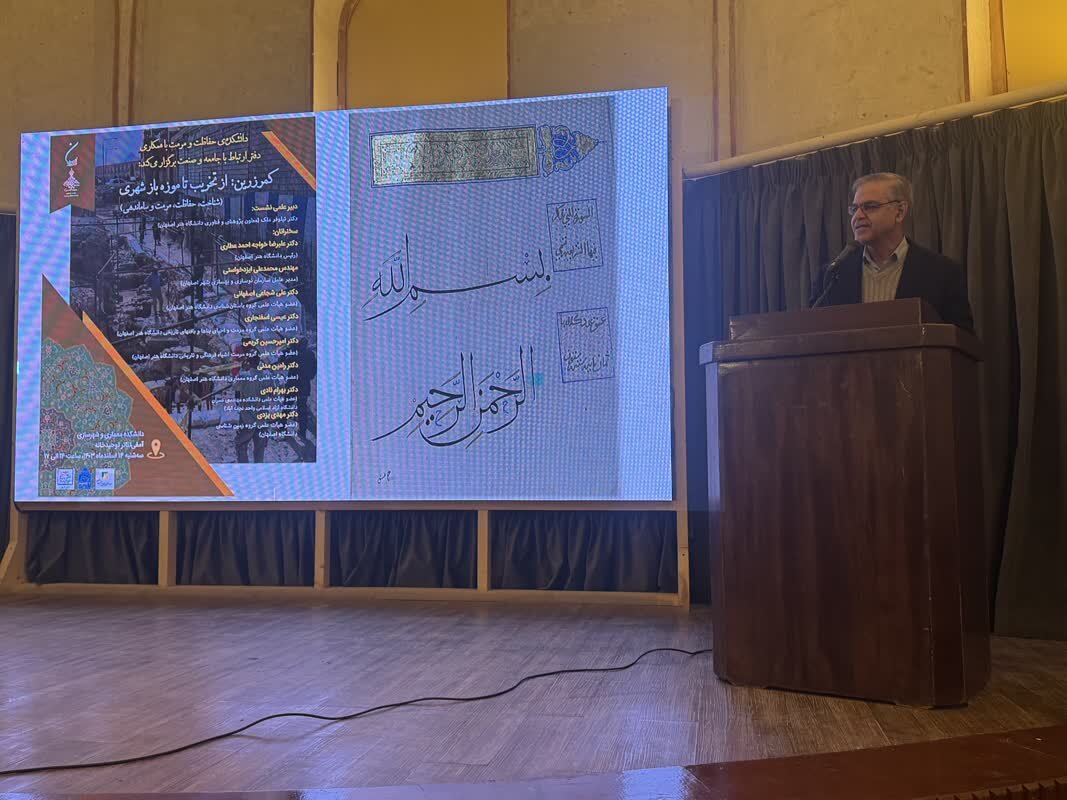The Camel's passage must be turned into an open city museum with historical narratives


According to Mehr Reporter, Alireza Khajeh Ahmad Atari At the specialized session “CamelFrom Destruction to Open Museum of Urban »That Tuesday evening in the hall Tawhid Isfahan University of Art was held, stating that one of the achievements of Isfahan University of Arts during the forty and Andy Last year, the university was able to say something in various fields, especially in the field of historical and archeology, stated: Isfahan University of Art in the city level in the fields of architecture, urbanism, archeology, restoration of monuments and other disciplines such as handicrafts.
He continued: Explorations and investigations Camel It began in March and continued until August 2008, and good results came that it could have something to say nationwide and even internationally. Fortunately, Isfahan University of Art has proudly made these efforts.
In another part of his remarks, the head of the Isfahan University of Art pointed to the relationship of man with objects and said: “When things come out of the earth, they actually have something to say to us.” Things as man -made effects of human beings have a particular relationship with human beings at any time, and this relationship can be bilateral. The discovered objects illustrate the system and characteristics of that historical period and convey to us messages of technology, culture and identity of that time.
He added: “At any time, objects represent the lifestyle and characteristics of that period.” For example, if we look at different historical periods such as Seljuk, Safavid and Qajar, there are many differences from earth to heaven, but the point is that humans generally create objects for their own use, although in every geography and in any culture this view of objects can be different.
Eunuch Ahmad Atari He then pointed to the importance of narrating historical objects in museums and said: “When things come out of the earth, the archaeologist has a duty to identify and introduce them to us.
“But that's not all,” he continued. From now on, the archaeologist is responsible or other people must act; It is a narrative. Things must be narrated, otherwise we will have problems.
Eunuch Ahmad Atari “This is the challenge that today's museums face,” he said. In addition to displaying objects, museums should also express their stories and narratives in order to better communicate with visitors.
The head of Isfahan University of Art, referring to the importance of narrative in museums, said: Museums cannot be merely the focus of objects. In museums, for example, there may be writings about an object that belong to the Safavid period or its motifs, but this information alone will not be able to communicate deeply with the visitor.
He added: The narrative of the flood of historical objects should be said so that visitors can communicate with them and understand the depths of history and culture.
Isfahan University of Art continued: For example, when it comes to an object like Yusuf's shirt, the stories and narratives that exist from it give it meaning. In this regard, many historical objects have to tell their background stories, and this is very important in museums and exhibitions.
Eunuch Ahmad Atari Referring to some historical examples, he said: “The lions on the chairs or sofas are somehow reminiscent of historical stories.” Historical sources, for example, stated that during the Sassanid era, when Bahram was trying to reach the crown, he sometimes faced two lions in one field, one symbol of conquest and the other symbol of the kingdom. The same stories make objects from a purely physical object become a historical narrative that is also displayed on most Sassanid plates today.
He emphasized: In future projects, especially in the museums and urban spaces of Isfahan, we must strive to not introduce historical objects only as lifeless works, but they must express their narratives. Isfahan, as a city with rich history and culture, must be able to convey these narratives to future generations through objects so that the culture and identity of the city will always remain alive and dynamic.
At the end, the head of Isfahan Art University said: The project CamelIt is a successful example of the interaction between urban management and the university that can be a model for other cultural heritage conservation projects. Hope this approach will be able to steps More effective To preserve the historical and cultural identity of Isfahan.
(tagstotranslate) Isfahan University of Art (T) Campaign (T) Qajar (T) Isfahan
Source:mehrnews